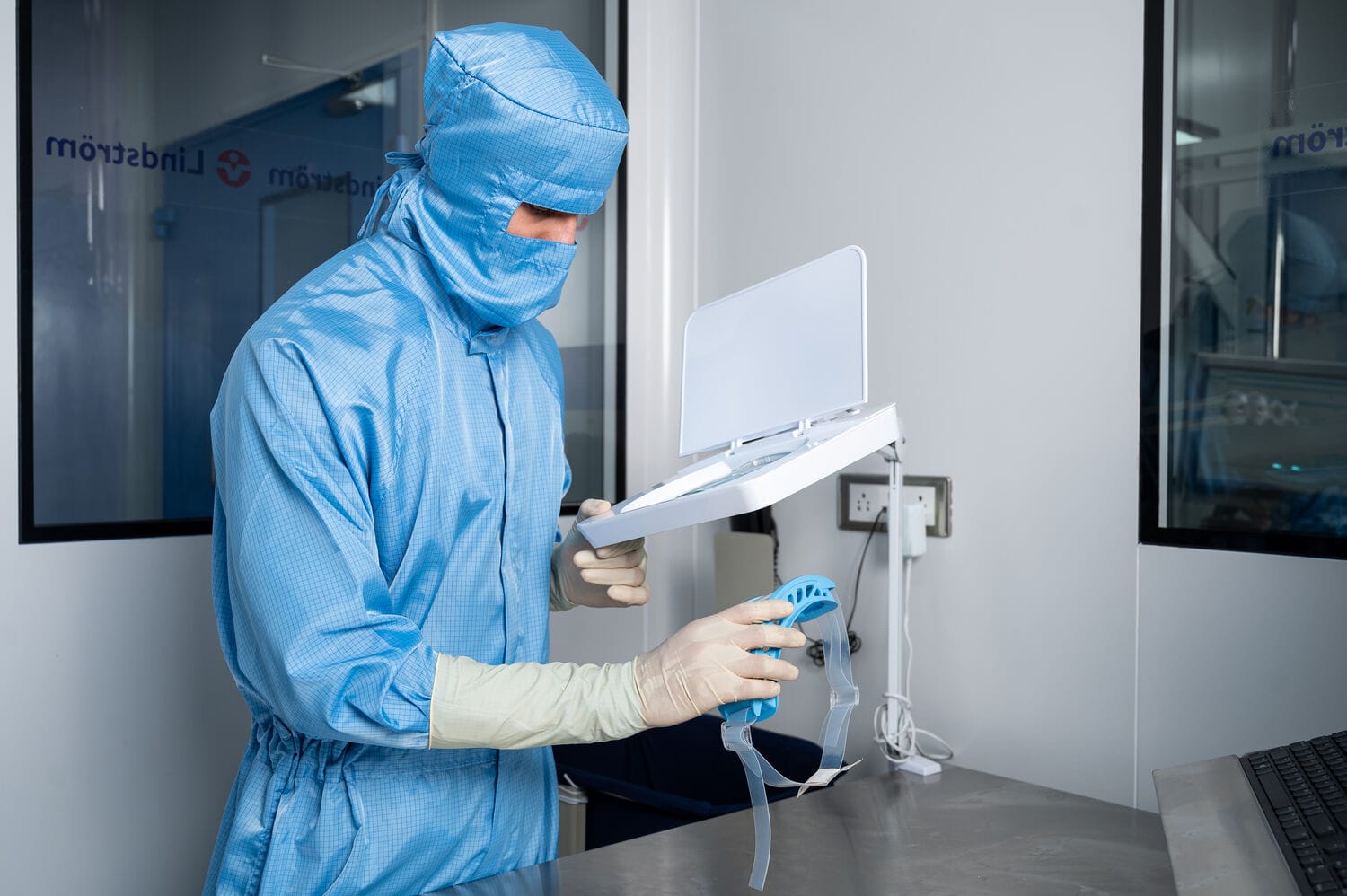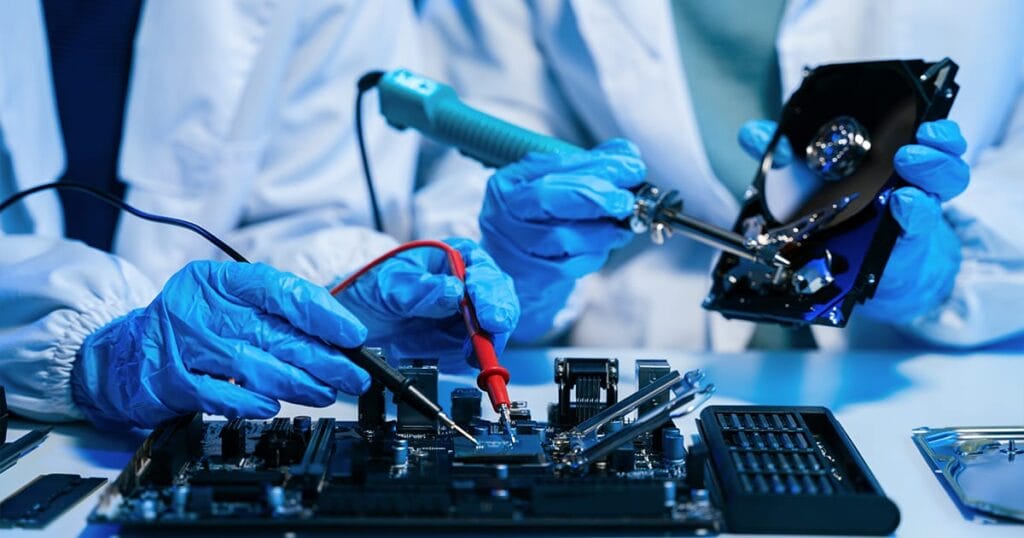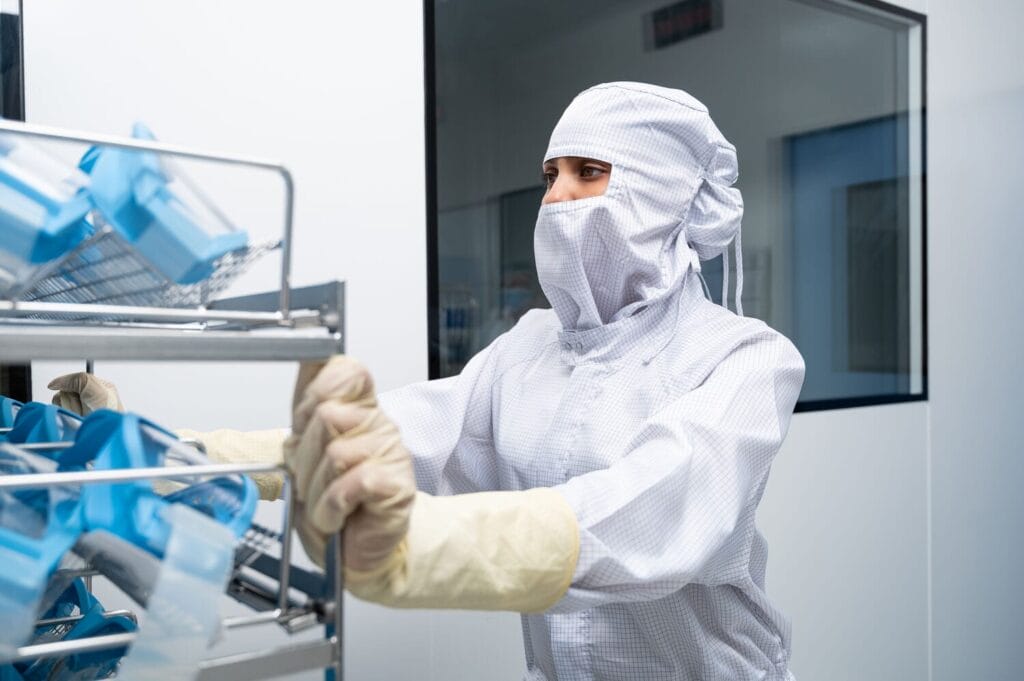
The essential guide to cleanroom uniforms: enhancing safety and efficiency
In most industries, especially in pharmaceutical, biotechnology, and medical device manufacturing, maintaining sterility in the environment is paramount. One factor that helps achieve this element of sterility is the use of appropriate, clean room attire. This paper focuses on cleanroom uniforms, looking at their importance, the different categories of cleanroom uniforms available, and how one best puts them on to maintain a clean environment.
- Infection Control: People are the most common source of contamination inside a cleanroom. For this reason, wearing cleanroom garments is one of the primary steps in preventing the contamination of these controlled environments. Proper cleanroom workwear reduces the likelihood of contamination of these processes and products.
- Protection and Easing: In addition to the restriction of the spread of contamination, cleanroom uniforms have the additional benefit of protection and easement for employees. These uniforms are made of materials that are both light and strong so that employees do not capture contaminants and are comfortable working in the normal course of the day.
Types of cleanroom uniforms:
Disposable vs. Reusable: Once attendees get into the cleanroom, the other strategy that they are faced with is disposable versus non-disposable, or economic versus reusable cleanroom workwear. Each category has merits and demerits.
Material and Composition:
- Disposable Uniforms: These usually consist of a polyethene film and a non-woven polypropylene layer. They are repaired only once by gamma irradiation concerning water, which helps preserve their structure during storage.
- Reusable Uniforms: Generally made from woven polyester, these uniforms are washed after ionised mist and sterilised with gamma irradiation or autoclaving many more times. Over time, repeated sterilisation can age the fabric, reducing its efficiency in filtering bacteria.
Protection levels:
- Disposable Uniforms: Provide TYPE 5 and TYPE 6 protection. Limited spraying of chemicals with TYPE 5 and 6 so no solid particle can penetrate. A strong barrier is created to restrain the escape of hair, skin flakes, and other particles into the clean room.
- Reusable Uniforms: With none; filtration efficiency against bacteria is less than 70% with this leading wash washing able to lower this even more. Accidental bias on the uniform has occurred owing to cosmetic misses making these uniforms more limiting to wear in an area that are prone to cytotoxic chemical splashes.
Donning techniques to maintain sterility:
One useful practice in effective use of clean-room uniforms within the room’s limits is aseptic donning. A proper technique matters tremendously in the gowning procedure since it prevents the contaminants from being introduced.
Aseptic Donning Steps
- Preparation: Wash hands and use alcohol gel prior to starting the process of donning a uniform.
- Gowning Order: Adhere to a certain order of gowning, which normally includes handling a bouffant head covering or hood first, putting on a face mask next, a cleanroom coat afterwards, and finally, gloves.
- Minimise Contact: Do not allow any contact on the outer surface area of the cleanroom uniform to avoid risk of contamination. Rather the outside of the uniform must be avoided, and the uniform is worn right side inwards.
Benefits of aseptic donning:
- Minimises Cross Contamination: Correct donning techniques will ensure lesser contact with the garment exterior with the occupants thus less risk of contaminants being introduced into a cleanroom.
- Improved Safety: There is protection of the product and cleanroom space through strict donning procedures.
- Facilitates Regulatory Compliance: Following regulatory requirements such as EU GMP Annex 1 that relates itself to risk management and control of cross contamination helps to achieve compliance.
Conclusion:
The importance of cleanroom uniforms is paramount. It covers all aspects, from the choices of an appropriate type of workwear through to the proper vacuum aseptic donning, which is all in a bid towards promotion of cleanliness and lack of harmful strains. By following proper cleanroom workwear and donning procedures, the industries will be able to protect the quality of their products in addition to having a cleaner and safer efficient workplace for stakeholders.
Quality and adequacy are the two goals that can usually be pursued quite independently; however, in the case of clothing worn in cleanrooms, these two strategies need to be combined. Addressing this issue of ill-fitting cleanroom garments, in the end, improves the overall operating features of a cleanroom facility as well as defines its components – reliability of performance, characteristics of the final output and the actual legal compliance policies, where legal practice approaches stand.

Frequently Asked Questions (FAQ)
Lindström uses a controlled laundering and maintenance cycle to ensure each garment meets ISO cleanroom standards. The garments are RFID-tagged for traceability, inspected for wear and tear, and replaced when necessary—ensuring uniform cleanliness, compliance, and consistency across operations.
Unlike in-house laundering, Lindström offers validated cleanroom laundry services in ISO-certified facilities. This includes routine testing regarding particle counts and microbial contamination. It helps customers to fully comply with the regulations, to reduce the risks, and to avoid investment in costly infrastructure.
Yes. Lindström provides garment designs that are industry-specific such as anti-static suits for electronics, sterile garments for pharma, and breathable materials that are for high-temperature environments. Each design can be tailored to meet ISO Class 7 or 8 cleanroom requirements.
Lindström incorporates energy-efficient washing technologies, water recycling, and optimized logistics in its cleanroom laundry services. By extending garment life and reducing waste through reuse, Lindström supports environmental goals without compromising cleanliness.
An ill-fitting uniform can increase contamination risk through gaps, frequent readjustment, or exposure. Lindström provides proper fitting consultations and a range of sizes to ensure each worker has a uniform that enhances mobility while maintaining full coverage and compliance.
The change frequency depends on risk assessment, cleanroom class, and operational load. Lindström supports this by offering garment usage tracking and scheduled replacement cycles, ensuring that employees always have access to clean, compliant uniforms when needed.
Lindström provides full traceability records, including garment lifecycle data, cleaning logs, contamination reports, and certification of laundering processes. This transparency simplifies customer audits and helps demonstrate adherence to GMP and ISO 14644 standards.



